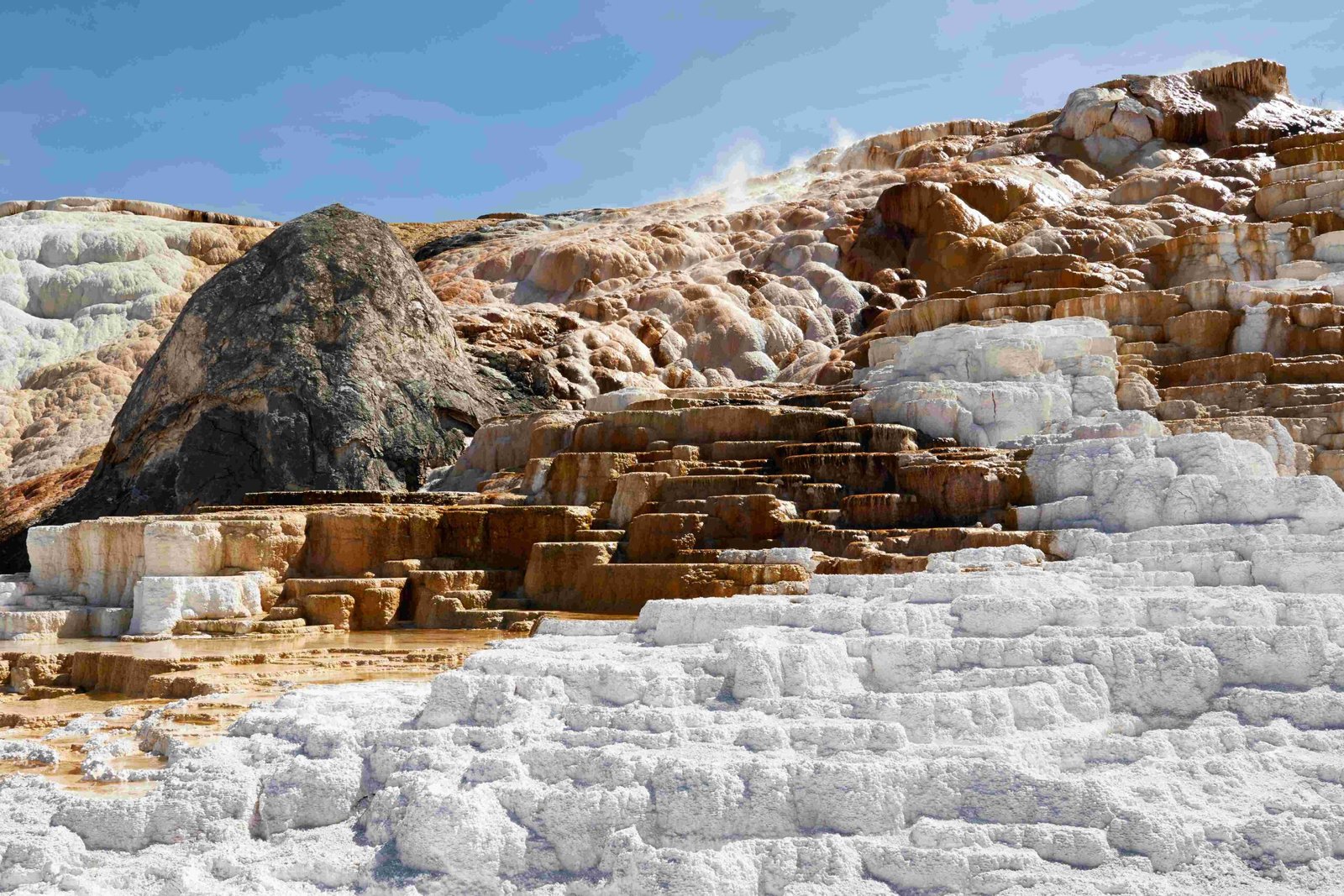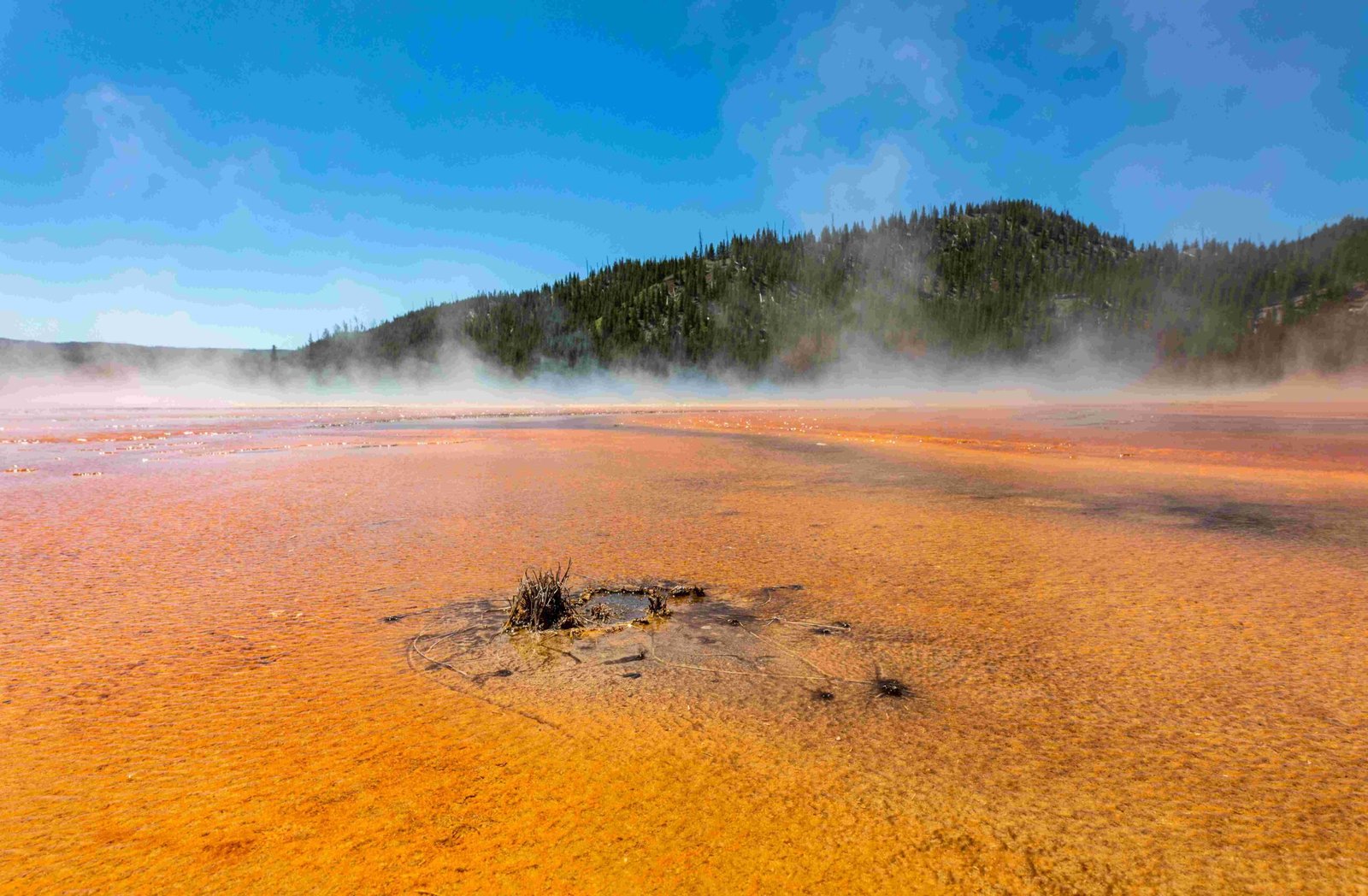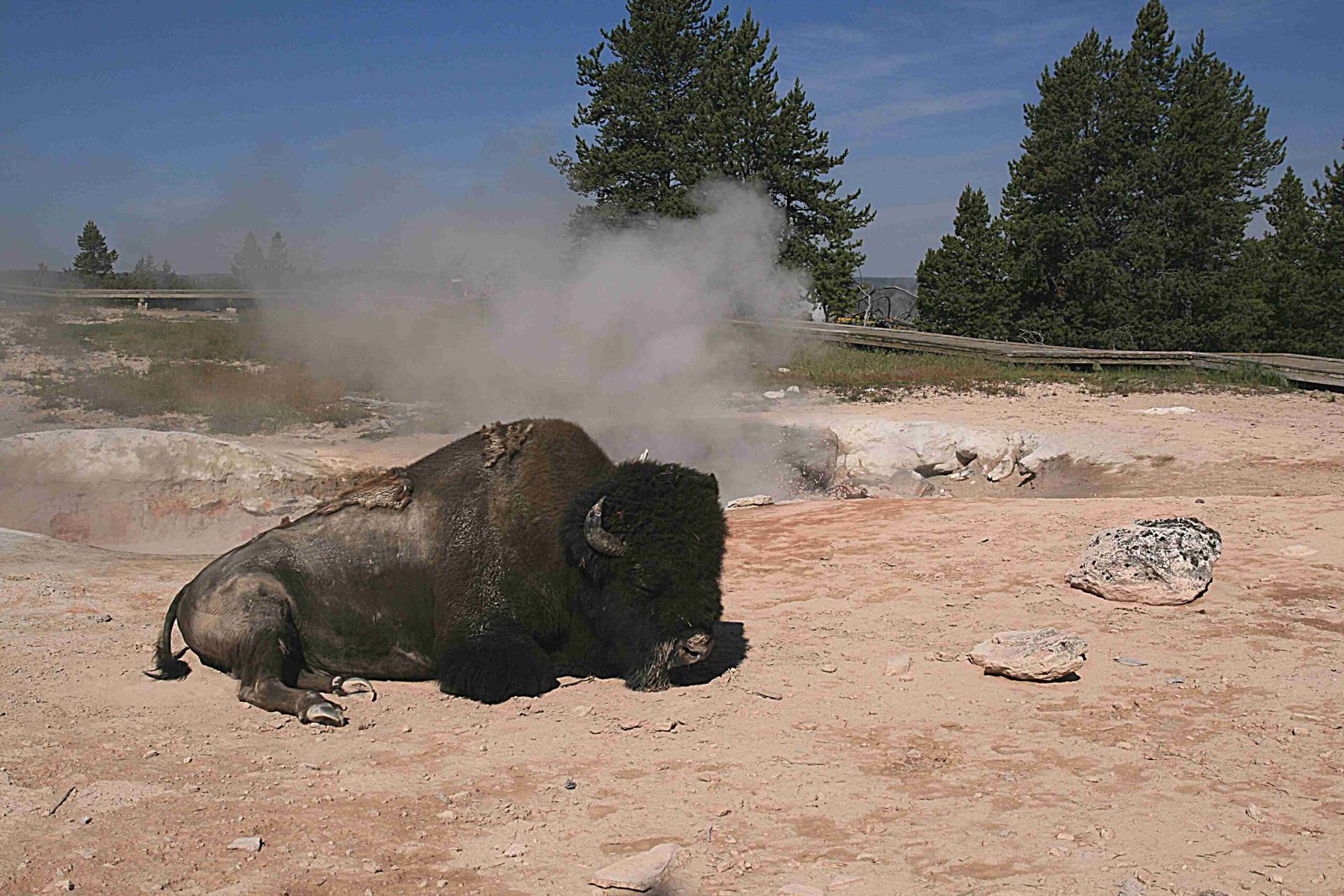Yellowstone National Park, renowned for its diverse wildlife, has witnessed numerous incidents where bison have collided with vehicles during stampedes. These powerful animals, weighing up to 2,000 pounds, can reach speeds of 30 mph, making encounters with cars potentially catastrophic. The park has recorded 241 known vehicle collisions with bison over various years, highlighting the ongoing challenge of managing wildlife-vehicle interactions in this popular tourist destination.
What Causes Bison Stampedes in Yellowstone?

Bison stampedes in Yellowstone National Park can be triggered by various factors:
- Perceived threats from predators or humans
- Sudden loud noises or disturbances
- Mating season behaviors
- Competition for resources
- Weather changes
During these stampedes, bison may become disoriented and run into vehicles on park roads, leading to dangerous situations for both animals and visitors.
How Often Do Bison-Vehicle Collisions Occur?

The frequency of bison-vehicle collisions in Yellowstone National Park is a significant concern:
- In 2020, 14 known vehicle collisions with bison were reported
- This occurred out of 3.8 million recreation visits to the park
- Over various years, a total of 241 known vehicle collisions with bison have been documented
These statistics underscore the importance of visitor awareness and adherence to safety guidelines when driving through bison habitats.
What Are the Consequences of a Bison Plowing into a Car?
When a bison plows into a car during a stampede, the consequences can be severe:
- Vehicle damage: Due to their size and weight, bison can cause significant damage to cars, potentially totaling them.
- Personal injuries: Occupants may suffer injuries ranging from minor bruises to severe trauma.
- Bison injuries or fatalities: The impact can also harm or kill the bison involved.
- Traffic disruptions: Such incidents often lead to road closures and traffic jams within the park.
- Financial costs: Repairs, medical bills, and potential legal issues can result in substantial expenses.
How Can Visitors Protect Themselves from Bison Stampedes?
To minimize the risk of encountering a bison stampede or collision, visitors should follow these guidelines:
- Maintain a safe distance of at least 25 yards (23 meters) from bison at all times
- Stay alert and aware of your surroundings, especially in areas known for bison activity
- If you see bison near the road, slow down and be prepared to stop
- Never approach or attempt to feed bison
- Follow all park signage and ranger instructions
What Safety Measures Has Yellowstone Implemented?
Yellowstone National Park has implemented several safety measures to protect visitors from bison encounters:
- Warning signs: Placed throughout the park, especially in high-risk areas
- Educational programs: Ranger-led talks and informational materials about wildlife safety
- Distance guidelines: Clear instructions on maintaining safe distances from wildlife
- Emergency protocols: Procedures for reporting and responding to wildlife incidents
- Traffic management: Measures to control vehicle speed and flow in bison-prone areas
How Do Bison Behave During a Stampede?
Understanding bison behavior during a stampede is crucial for visitor safety:
- Speed: Bison can reach speeds of up to 30 miles per hour
- Unpredictability: They may change direction suddenly and without warning
- Group dynamics: Stampeding bison often move as a herd, increasing the danger
- Tunnel vision: Focused on escape, bison may not notice or avoid obstacles like vehicles
- Duration: Stampedes can continue for considerable distances before the herd calms down
What Should You Do if Caught in a Bison Stampede?
If you find yourself in the path of a bison stampede while in your vehicle:
- Stay in your car: Never exit the vehicle during a stampede
- Turn off the engine: This reduces noise that might further agitate the bison
- Remain calm: Panic can lead to poor decision-making
- Wait it out: Allow the herd to pass before attempting to move
- Report the incident: Contact park rangers as soon as it’s safe to do so
Are There Specific Areas in Yellowstone More Prone to Bison Stampedes?
Certain areas in Yellowstone National Park are more likely to experience bison stampedes:
| Area | Risk Level | Reason |
|---|---|---|
| Hayden Valley | High | Large bison population, open grasslands |
| Lamar Valley | High | Prime bison habitat, frequent sightings |
| Old Faithful area | Moderate | High visitor traffic, occasional bison presence |
| Madison Junction | Moderate | Intersection of major park roads, bison crossings |
| Mammoth Hot Springs | Low to Moderate | Administrative area, fewer bison but still present |
How Has Yellowstone’s Bison Management Evolved?
Yellowstone’s approach to bison management has changed over time:
- Early 1900s: Bison were nearly extinct, with only 23 individuals remaining in the park
- Mid-20th century: Conservation efforts led to population recovery
- 1980s-1990s: Concerns about brucellosis transmission to cattle outside the park
- 2000s: Implementation of Interagency Bison Management Plan
- Present day: Ongoing efforts to balance bison conservation with public safety and resource management
What Role Do Park Rangers Play in Bison-Related Incidents?
Park rangers are crucial in managing bison-related incidents:
- Incident response: Quickly addressing collisions or stampedes
- Traffic control: Managing vehicle flow during bison crossings or incidents
- Education: Providing visitors with safety information and wildlife behavior insights
- Monitoring: Tracking bison movements and identifying high-risk areas
- Enforcement: Ensuring visitors comply with park regulations regarding wildlife
How Can Technology Help Prevent Bison-Vehicle Collisions?
Emerging technologies could play a role in reducing bison-vehicle collisions:
- Wildlife detection systems: Sensors that alert drivers to animal presence on roads
- GPS tracking: Monitoring bison herds to predict movements and potential road crossings
- Mobile apps: Real-time updates on wildlife locations and safety alerts for park visitors
- Smart road signs: Dynamic signage that changes based on current wildlife activity
- Autonomous vehicle features: Advanced driver assistance systems that can detect and respond to large animals
By implementing these technologies and continuing to educate visitors, Yellowstone National Park can work towards reducing the incidents of bison plowing into cars during stampedes, ensuring a safer experience for both wildlife and park guests.
References:
1. https://ftw.usatoday.com/2021/07/yellowstone-reveals-number-of-large-animals-struck-by-vehicles
2. https://mycountry955.com/when-bison-attack-in-yellowstone-they-dont-care-if-its-a-car/
3. https://www.researchgate.net/figure/Number-of-bison-related-injuries-by-year-Yellowstone-National-Park-2000-2015-N-25_fig2_325387641

